
Industrials automation company Rockwell (NYSE: ROK) beat Wall Street’s revenue expectations in Q1 CY2025, but sales fell by 5.9% year on year to $2.00 billion. Its non-GAAP profit of $2.45 per share was 15.8% above analysts’ consensus estimates.
Is now the time to buy Rockwell Automation? Find out by accessing our full research report, it’s free.
Rockwell Automation (ROK) Q1 CY2025 Highlights:
- Revenue: $2.00 billion vs analyst estimates of $1.98 billion (5.9% year-on-year decline, 1.1% beat)
- Adjusted EPS: $2.45 vs analyst estimates of $2.12 (15.8% beat)
- Adjusted EBITDA: $372 million vs analyst estimates of $380.2 million (18.6% margin, 2.2% miss)
- Management raised its full-year Adjusted EPS guidance to $9.70 at the midpoint, a 5.4% increase
- Operating Margin: 20.4%, up from 15.6% in the same quarter last year
- Free Cash Flow Margin: 8.5%, up from 3.2% in the same quarter last year
- Organic Revenue fell 4% year on year (-8.1% in the same quarter last year)
- Market Capitalization: $28.61 billion
"Rockwell delivered another quarter of strong operating performance with sales, margins, and EPS all above our expectations. We saw a healthy intake of orders across most of our lines of business, with total company book-to-bill in-line with our historical average of about 1.0. We also continue to add resiliency to our operations as we navigate a highly dynamic environment. I’m proud of how our employees and partners are working together to position Rockwell as the automation leader of choice for our customers in the U.S. and around the world," said Blake Moret, Chairman and CEO.
Company Overview
One of the first companies to address industrial automation, Rockwell Automation (NYSE: ROK) sells products that help customers extract more efficiency from their machinery.
Sales Growth
A company’s long-term sales performance can indicate its overall quality. Any business can experience short-term success, but top-performing ones enjoy sustained growth for years. Regrettably, Rockwell Automation’s sales grew at a sluggish 3.3% compounded annual growth rate over the last five years. This was below our standard for the industrials sector and is a tough starting point for our analysis.
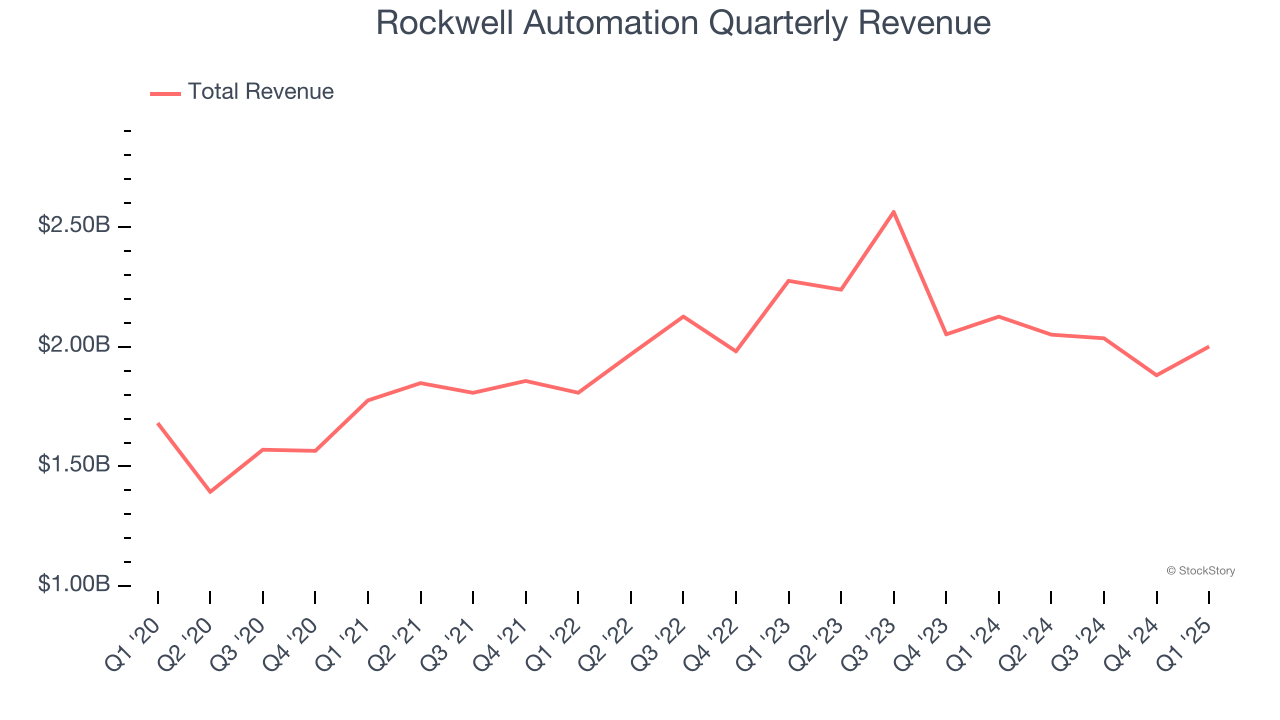
We at StockStory place the most emphasis on long-term growth, but within industrials, a half-decade historical view may miss cycles, industry trends, or a company capitalizing on catalysts such as a new contract win or a successful product line. Rockwell Automation’s performance shows it grew in the past but relinquished its gains over the last two years, as its revenue fell by 2.3% annually. Rockwell Automation isn’t alone in its struggles as the Internet of Things industry experienced a cyclical downturn, with many similar businesses observing lower sales at this time. 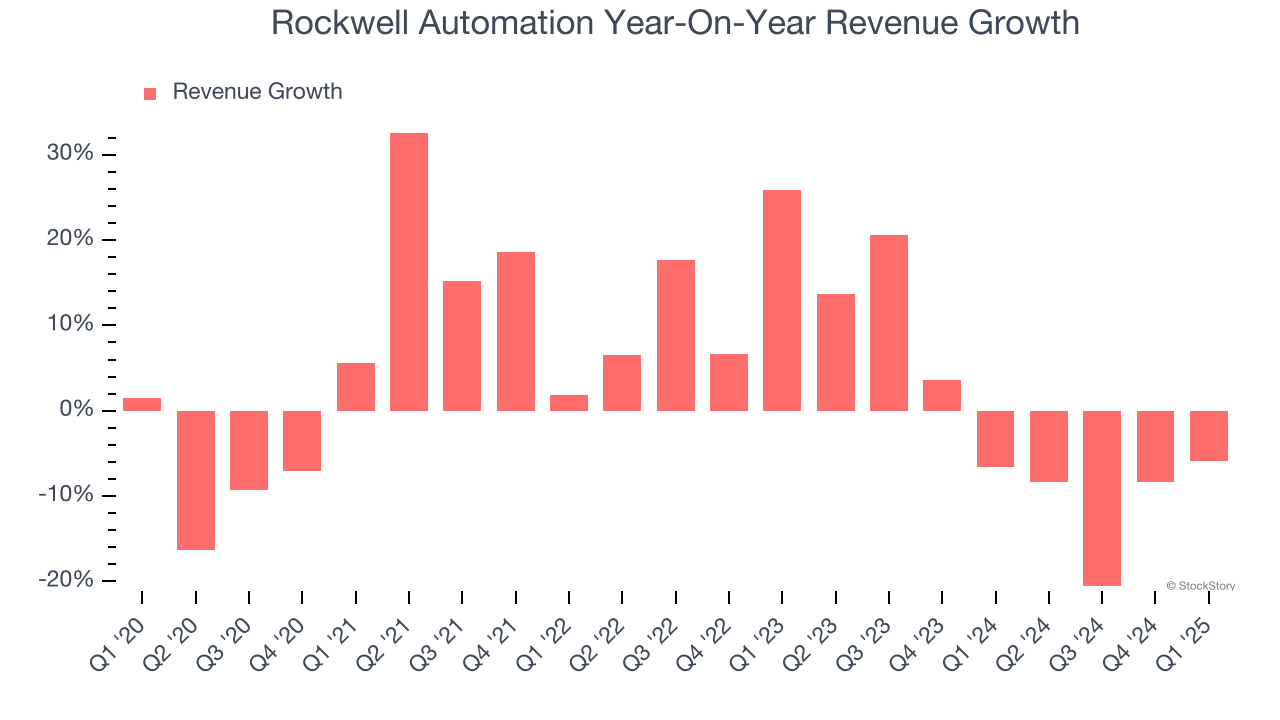
We can dig further into the company’s sales dynamics by analyzing its organic revenue, which strips out one-time events like acquisitions and currency fluctuations that don’t accurately reflect its fundamentals. Over the last two years, Rockwell Automation’s organic revenue averaged 2.2% year-on-year declines. Because this number aligns with its normal revenue growth, we can see the company’s core operations (not acquisitions and divestitures) drove most of its results. 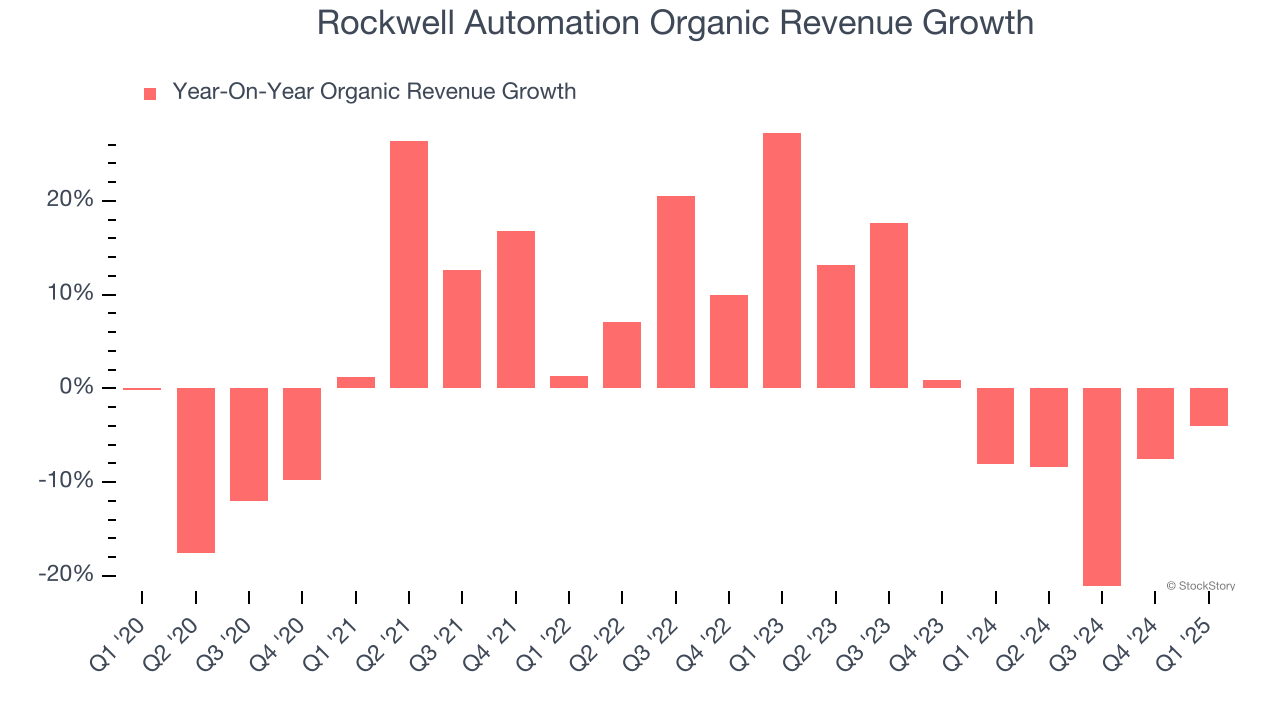
This quarter, Rockwell Automation’s revenue fell by 5.9% year on year to $2.00 billion but beat Wall Street’s estimates by 1.1%.
Looking ahead, sell-side analysts expect revenue to grow 4.8% over the next 12 months. While this projection implies its newer products and services will fuel better top-line performance, it is still below average for the sector.
Software is eating the world and there is virtually no industry left that has been untouched by it. That drives increasing demand for tools helping software developers do their jobs, whether it be monitoring critical cloud infrastructure, integrating audio and video functionality, or ensuring smooth content streaming. Click here to access a free report on our 3 favorite stocks to play this generational megatrend.
Operating Margin
Operating margin is one of the best measures of profitability because it tells us how much money a company takes home after procuring and manufacturing its products, marketing and selling those products, and most importantly, keeping them relevant through research and development.
Rockwell Automation has been a well-oiled machine over the last five years. It demonstrated elite profitability for an industrials business, boasting an average operating margin of 16.9%. This result isn’t surprising as its high gross margin gives it a favorable starting point.
Analyzing the trend in its profitability, Rockwell Automation’s operating margin decreased by 1.8 percentage points over the last five years. This raises questions about the company’s expense base because its revenue growth should have given it leverage on its fixed costs, resulting in better economies of scale and profitability.
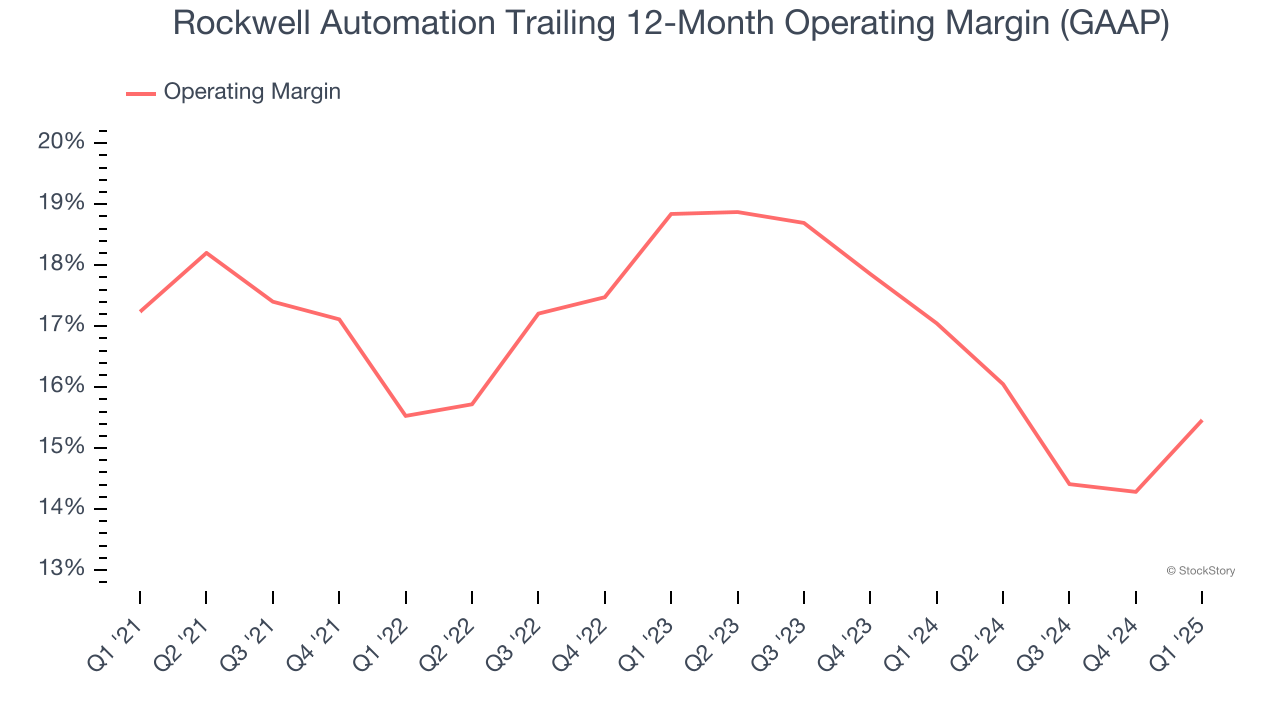
This quarter, Rockwell Automation generated an operating profit margin of 20.4%, up 4.8 percentage points year on year. The increase was encouraging, and because its operating margin rose more than its gross margin, we can infer it was more efficient with expenses such as marketing, R&D, and administrative overhead.
Earnings Per Share
Revenue trends explain a company’s historical growth, but the long-term change in earnings per share (EPS) points to the profitability of that growth – for example, a company could inflate its sales through excessive spending on advertising and promotions.
Rockwell Automation’s flat EPS over the last five years was below its 3.3% annualized revenue growth. This tells us the company became less profitable on a per-share basis as it expanded due to non-fundamental factors such as interest expenses and taxes.
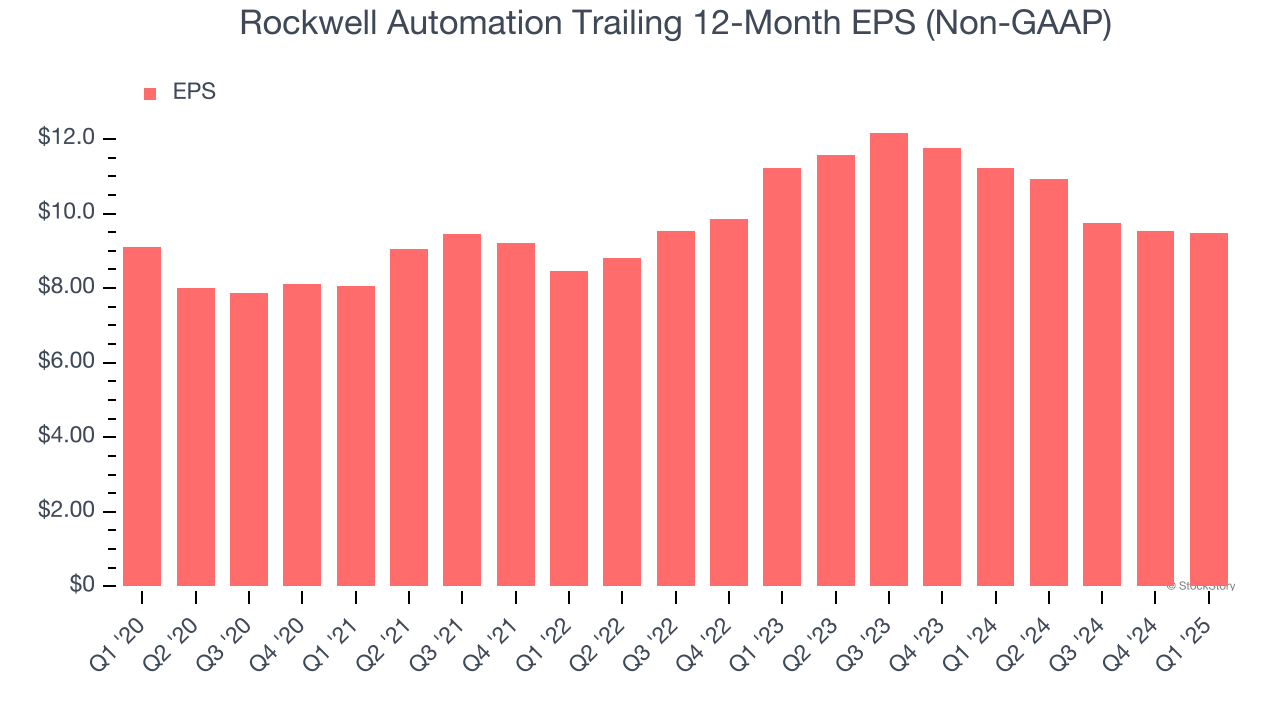
We can take a deeper look into Rockwell Automation’s earnings to better understand the drivers of its performance. As we mentioned earlier, Rockwell Automation’s operating margin improved this quarter but declined by 1.8 percentage points over the last five years. This was the most relevant factor (aside from the revenue impact) behind its lower earnings; taxes and interest expenses can also affect EPS but don’t tell us as much about a company’s fundamentals.
Like with revenue, we analyze EPS over a more recent period because it can provide insight into an emerging theme or development for the business.
For Rockwell Automation, its two-year annual EPS declines of 8.1% show its recent history was to blame for its underperformance over the last five years. These results were bad no matter how you slice the data.
In Q1, Rockwell Automation reported EPS at $2.45, down from $2.51 in the same quarter last year. Despite falling year on year, this print easily cleared analysts’ estimates. Over the next 12 months, Wall Street expects Rockwell Automation’s full-year EPS of $9.49 to grow 5.5%.
Key Takeaways from Rockwell Automation’s Q1 Results
We were impressed by Rockwell Automation’s optimistic full-year EPS guidance, which blew past analysts’ expectations. We were also glad its revenue and EPS outperformed Wall Street’s estimates. On the other hand, its EBITDA missed. Overall, we think this was a solid quarter with some key areas of upside. The stock traded up 8.8% to $275.10 immediately following the results.
Indeed, Rockwell Automation had a rock-solid quarterly earnings result, but is this stock a good investment here? When making that decision, it’s important to consider its valuation, business qualities, as well as what has happened in the latest quarter. We cover that in our actionable full research report which you can read here, it’s free.





